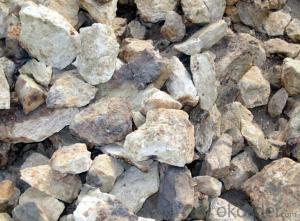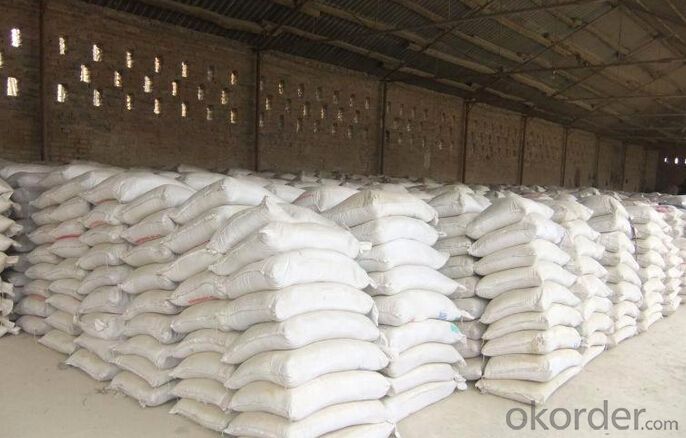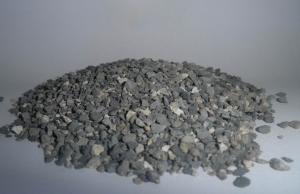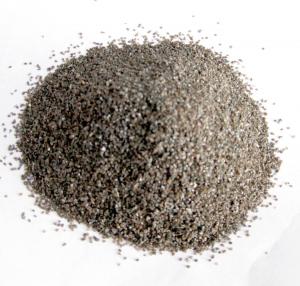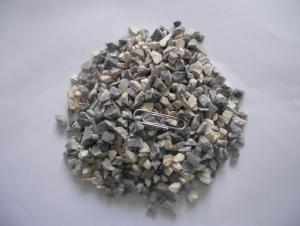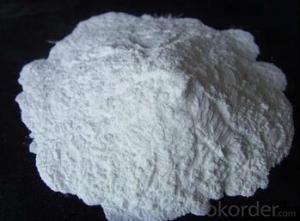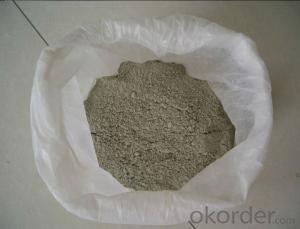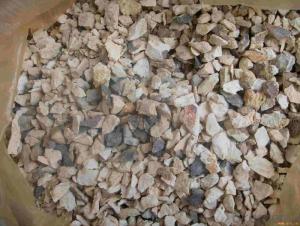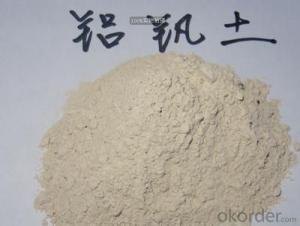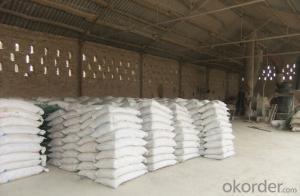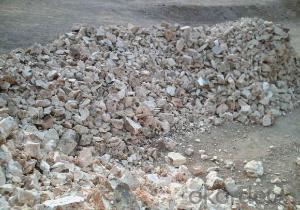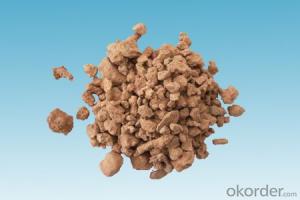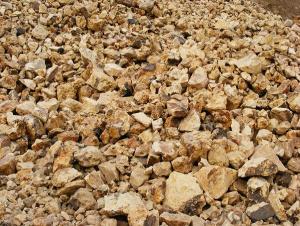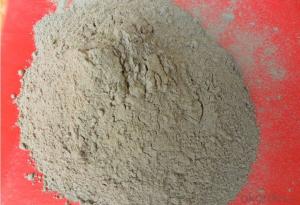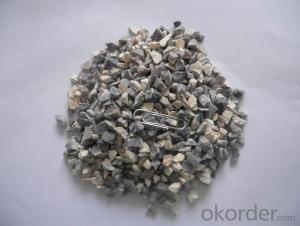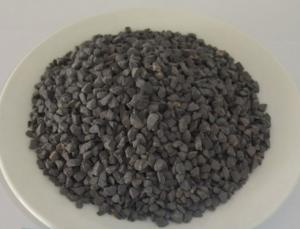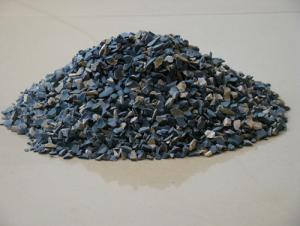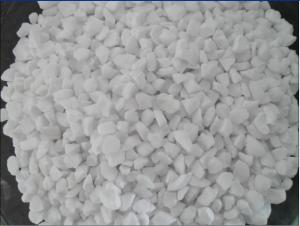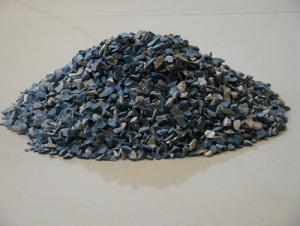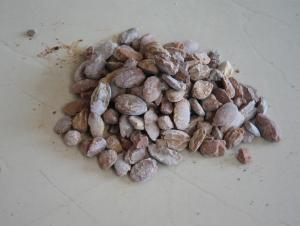Raw Materials for Refractory:Popular in Poland Bauxite of CNBM in China
- Loading Port:
- Tianjin
- Payment Terms:
- TT OR LC
- Min Order Qty:
- 20000 m.t.
- Supply Capability:
- 10000000 m.t./month
OKorder Service Pledge
OKorder Financial Service
You Might Also Like
1.Structure of Calcined Bauxite Description
Bauxite (aluminous soil; Bauxite) is also called the alumina or bauxite, main ingredients are alumina, hydrated alumina containing impurities, is an earthy mineral. White or gray, brown and yellow or light red by iron. From 4 to 3.9 g/cm3 density, hardness, 1 ~ 3 is not transparent, very brittle. Very difficult to melt. Insoluble in water, soluble in sulfuric acid, sodium hydroxide solution. Mainly used for aluminium, refractory material.
2.Main Features of the Calcined Bauxite
Calcined bauxite is one of the principal ore of aluminum. Calcined bauxite contains hydrous aluminum oxides and aluminum
hydroxides, formed through the laterization of aluminous rocks in tropical and subtropical areas .Calcined bauxite is obtained by calcining (heating)superior grade bauxite at high temperature (from 85OC to 1600C) .This removes moisture there. By increasing the alumina content,compared to an alumina content of about 57%to 58% in raw bauxite, calcined bauxite has an alumina content of 84%to88%.The heating is carried out in rotary kilns.
3. Calcined Bauxite Images
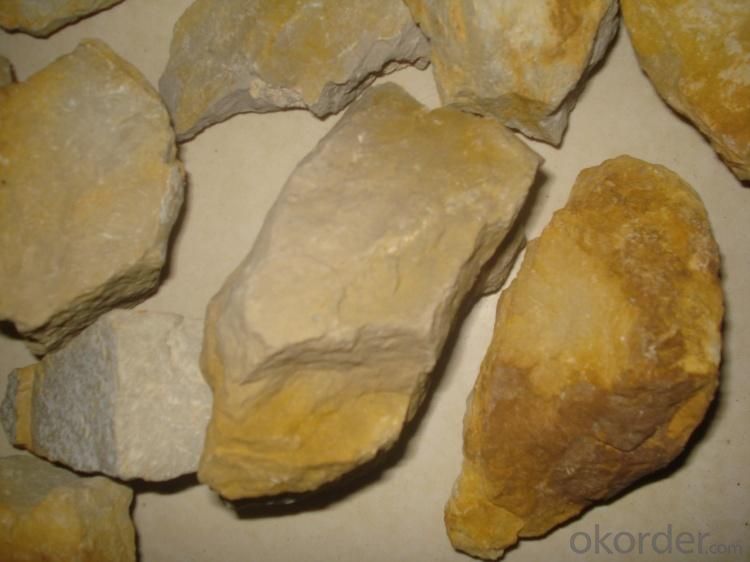
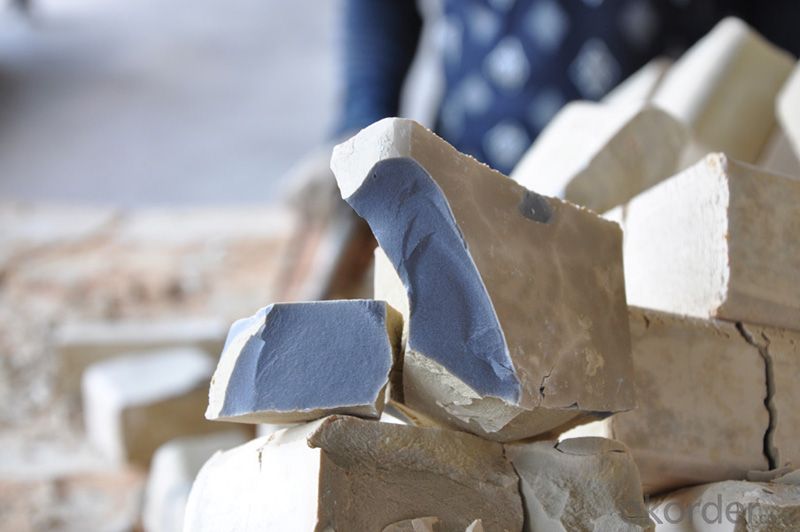
4. Calcined Bauxite Specification
ROTARY KILN BAUXITE
Al2O3 | Fe2O3 | SiO2 | TiO2 | K2O+Na2O | CaO+MgO | B.D (g/ccm) |
min | max | max | max | max | max | min |
88% | 1.8% | 6.5% | 4% | 0.25% | 0.5% | 3.25 |
87% | 2.0% | 7.0% | 4% | 0.25% | 0.5% | 3.15 |
86% | 2.0% | 7.0% | 4% | 0.25% | 0.5% | 3.15/3.10 |
85-80% | 2.0% | 10.0% | 4% | 0.30% | 0.5% | 3.10 |
ROUND KILN BAUXITE
Al2O3 | Fe2O3 | SiO2 | TiO2 | K2O+Na2O | CaO+MgO | B.D (g/ccm) |
min | max | max | max | max | max | min |
88% | 2.0% | 6.5% | 4% | 0.25% | 0.5% | 3.30 |
87% | 2.0% | 6.5% | 4% | 0.25% | 0.5% | 3.25 |
86% | 2.0% | 7.0% | 4% | 0.25% | 0.5% | 3.20 |
85% | 2.5% | 8.0% | 4% | 0.25% | 0.5% | 3.10/3.15 |
5.FAQ of Calcined Bauxite
1). Q: Are you a factory or trading company?
A: We are a factory.
2). Q: Where is your factory located? How can I visit there?
A: Our factory is located in ShanXi, HeNan, China. You are warmly welcomed to visit us!
3). Q: How can I get some samples?
A: Please connect me for samples
4). Q: Can the price be cheaper?
A: Of course, you will be offered a good discount for big amount.
Advantage:
1.High quality and competitive price.
2.Timely delivery.
3.If any item you like. Please contact us.
Your sincere inquiries are typically answered within 24 hours.
- Q: What materials is silicious thermal insulation board made of?
- Siliceous insulating panels use quartz sand as the main material and are composited with fiber. Of course the amount of insulation board materials used by different companies is different. In terms of Hua Heng, siliceous insulating boards can be divided into insulating panels for casting slabs and insulation board for intermediate tank according to the usage. The latter one can be divided into liner plate (wallboard, side panels, baseboard) and impingement plate based on parts it is used on. Siliceous insulating panels use quartz sand as the main material and are composited with fiber. Method for manufacturing a silicon insulating panel is divided into semi-dry method and wet method. It is used for casting ingot insulation cap of the killed steel and continuous casting tundish.
- Q: How to understand qualitative and qualitative refractory materials?
- Such as amorphous refractory castable, referred to as bulk loading, cast material, ramming material, refractory clay etc., utensils and other special products. Amorphous refractory material products, refractory heat insulating bricks and experimental and industrial crucible, spraying materials, such as burning bricks, electric melting brick, turn it into required shape and process heat treatment in where it is used.
- Q: How is the grading of the level A new material fire insulation material?
- The standard to distinguish level A and level B is the different fireproofing coefficient. The level A is non-combustible. The level B is divided into B1, B2 and B3. B1 is flame retardant, B2 combustible and B3 flammable. The level A is commonly phenolic aldehyde, rock wool, thermal?mortar, foam ceramics, foam glass and foam concrete on the current market. Among the advantages of level A materials, the biggest one is foam concrete currently, also known as foam cement.
- Q: Is there requirement for radiation indicator in refractory?
- All refractories have no radiated harm to environment, so there is no requirement. From the elemental analysis, magnesite. I do not know it is helpful to you. But for refractory rwa material, any chemical element is radiated, including silicon?dioxide; If they are radioactive. From the use analysis, such as bauxite, do not have use value.
- Q: Who knows that among refractory materials, insulation boards from which refractory material industry is superior in quality?
- Using high temperature insulation material during casting process .In the molding, assembly the insulation?board on the ingot head or install heat insulation cap . There are three ways to install the molded steel insulation board and install insulation?board on at the head of the ingot, namely, clamping, nail fixation and mosaic technique.Compared with clay-based liner, the use of insulating board will improve high steel billet rate up to about 5% to 10%.
- Q: How long is the fire endurance of the rock wool board?
- When the average temperature reaches 140 degrees Celsius or 180 degrees Celsius, it starts to lose the fire insulation function.
- Q: What are the application of old refractory bricks?
- It can still be used as refractory bricks or refractory. The quality of auxiliary material is not as good as bauxite.
- Q: What are the disadvantages of the refractory industry?
- The rapid development of continuous casting technology allows Hua Heng refractories to be improved in variety and quality. The development of refractory for continuous casting has a significant impact on the production of continuous casting and quality of continuous casting billet. Constructing and putting Baosteel into action has greatly pushed the improvement of the refractory technology. Continuous casting refractory is an important part of the continuous casting machine. In addition to the general characteristics of refractories, it is also required functions that can purify molten steel, improve the quality of steel, stabilize temperature and composition of the molten steel, control and regulate the molten steel flow. Therefore, it is known as functional refractories. Continuous casting Refractories include: (1) ladle refractory - ladle lining, permanent lining and ventilation components; (2) tundish refractories - permanent lining, coating, insulating plates, clad etc; (3 ) functional refractories - long nozzle for non-oxidizing casting, submerged nozzle, monolithic stopper, sliding gate; (4) ceramic purifier for purifying molten , slag dam, alkaline paint and horizontal separating ring and gate board for continuous casting.
- Q: How many external wall thermal insulation fireproof material are there
- Inorganic active wall thermal insulation materials, cement foam thermal insulation board, glazed hollow bead insulation mortar, rock wool plate, glass wool plate etc., if used for external wall thermal insulation, rock wool board more frequently used.
- Q: What are the grades of refractory exterior wall thermal insulation materials?
- Classification of fire rating of extrior thermal insulation materials 1, According to national standard GB8624-97, the combustion performance of building materials are divided into the following grades A level: Incombustible building materials: Materials hardly burn. B1 class: Flame-retardant building materials: Flame-retardant material has good flame resistance. In case of fire in the air or at high temperature, it is difficult to catch fire and the fire will not spread quickly. And when the combustion source is removed, the burning will stop immediately. B2 Class: Combustible building materials: Combustible materials have a certain flame retardancy. In case of fire in the air or at high temperature, it will immediately burst into flames and it is easily to spread fire, such as wooden column, wooden roof truss, wooden beams and wooden stairs, etc. B3 level: Inflammable building materials: It has no flame retardant effect, and it is extremely inflammable, and the risk of fire is high. Classification of exterior wall thermal insulation materials according to fire rating: 1. Thermal insulation materials with A-level combustion performance Rock wool, glass wool, foam glass, foamed ceramic, foam cement, hole-closed perlite, etc. 2, Thermal insulation materials with B1-level combustion performance: Extruded polystyrene board (XPS) after special treatment / polyurethane (PU) after special treatment, phenolic aldehyde, gelatine powder polystyrene granule, and etc. 3. Thermal insulation materials with B2-level combustion performance: Molded polystyrene board (EPS), extruded polystyrene board (XPS), polyurethane (PU), polyethylene (PE), etc.
Send your message to us
Raw Materials for Refractory:Popular in Poland Bauxite of CNBM in China
- Loading Port:
- Tianjin
- Payment Terms:
- TT OR LC
- Min Order Qty:
- 20000 m.t.
- Supply Capability:
- 10000000 m.t./month
OKorder Service Pledge
OKorder Financial Service
Similar products
Hot products
Hot Searches
